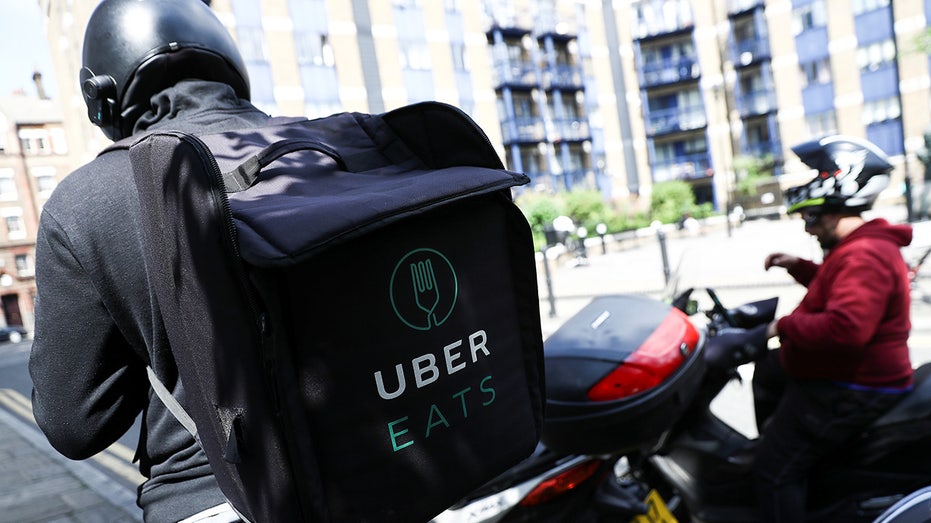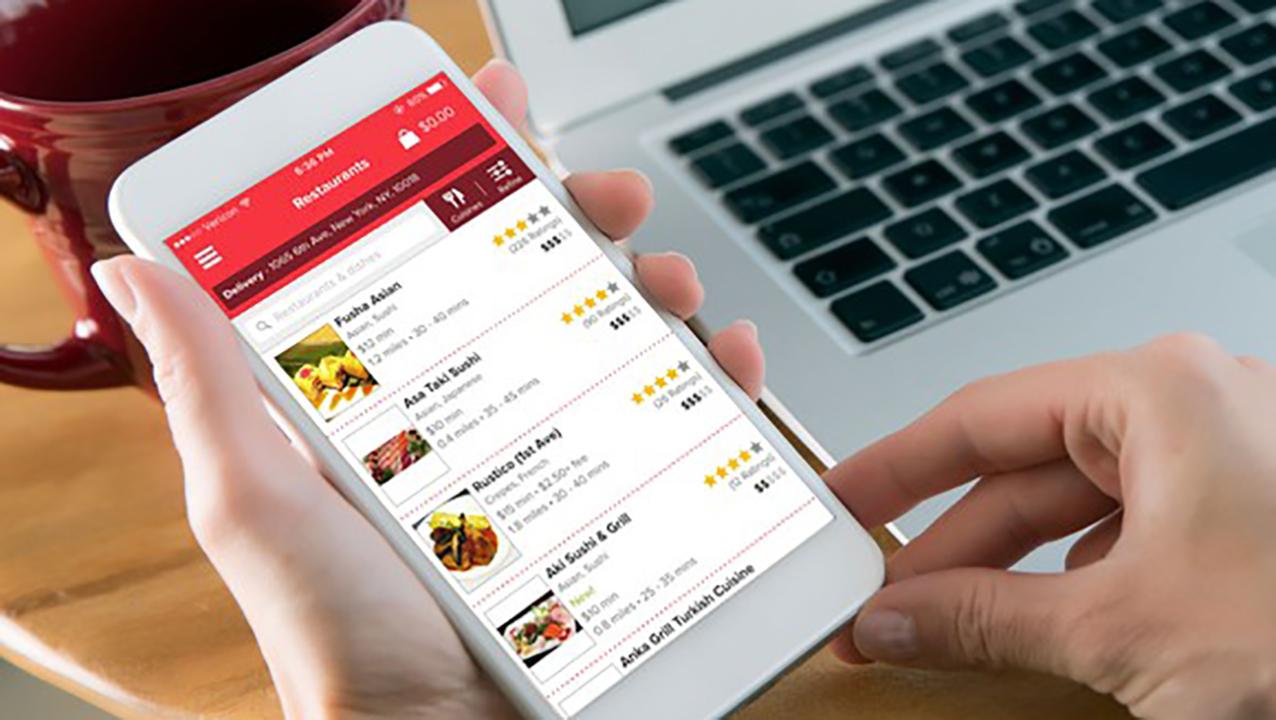Grubhub and third party delivery apps are devouring small businesses
Third-party delivery services are taking a big bite out of mom-and-pop restaurants.
On-demand food apps like Grubhub, Seamless and Uber Eats charge restaurants as much as 30% per order. Some restaurants use delivery apps as a marketing tool to reach more customers, but they end up eating more costs in the process.

A scooter driver prepares to delivery an Uber Eats food order in London, Britain June 8, 2018. REUTERS/Simon Dawson - RC1366FA6FD0
"It has been very hard for restaurants to survive with those high percentages,” Stathis Antonakopoulos, director of operations Areppas in New York, told FOX Business.
Areppas, a Venezuelan-inspired eatery, uses all of the major food delivery apps to expand its reach, since 25% of its business comes from delivery. And each service it uses takes anywhere between 15% to 30% per order, Antonakopoulos said.
“Unfortunately it is a necessity that is mandatory for restaurants in order to increase their total revenue and at the same make a restaurant known to a bigger consumer pool," Antonakopoulos said.
Restaurant owners complained about Grubhub in June for charging high commissions. A month later, Sen. Chuck Schumer, a New York Democrat, mandated a federal investigation into complaints that Grubhub charges restaurant fees for phone calls made via the app that don’t lead to orders. Grubhub lets users make phone calls through its app, though most customers place orders online or via smartphone.
A New York City politician criticized Grubhub on Monday for claiming it helps small businesses more than it negatively impacts their profits.
“Many restaurant owners have said that the delivery services’ orders are cannibalizing their existing customer base,” Mark Gjonaj, chair of the New York City Council’s Committee on Small Businesses said in a letter to the State Liquor Authority.
Gjonaj suggested new regulations in the letter that would limit how much money delivery companies make, the New York Post reported.
Katie Norris, a spokeswoman for Grubhub, cited a survey by research firm Technomic from August that found nearly nine out of 10 independent operators said that Grubhub increases the volume of takeout and delivery orders, and eight of 10 independent operators agree that the delivery services increase customer frequency.
"Since 2014, restaurants are getting more orders with larger overall ticket prices through our platform on a year-over-year basis," Norris said in an email to FOX Business.
Even national chains seem to be taking a blow to business. Domino’s Pizza Chief Executive Richard Allison said in July that third-party delivery services like Uber Eats and DoorDash were a challenge during the second-quarter.
"Our same-store sales performance for the quarter came in toward the lower end of our three-to-five-year outlook as we continue to navigate through headwinds related to aggressive activity from third-party aggregators," he said.
Grubhub reportedly grossed $1.5 billion in food sales in the first quarter of 2019, but others in the space seem to be struggling to compete. On-demand food delivery app Postmates, which planned to file to go public in Sept., meanwhile, is reportedly unprofitable despite its $2.4 billion private market valuation, Business Insider reported.




















